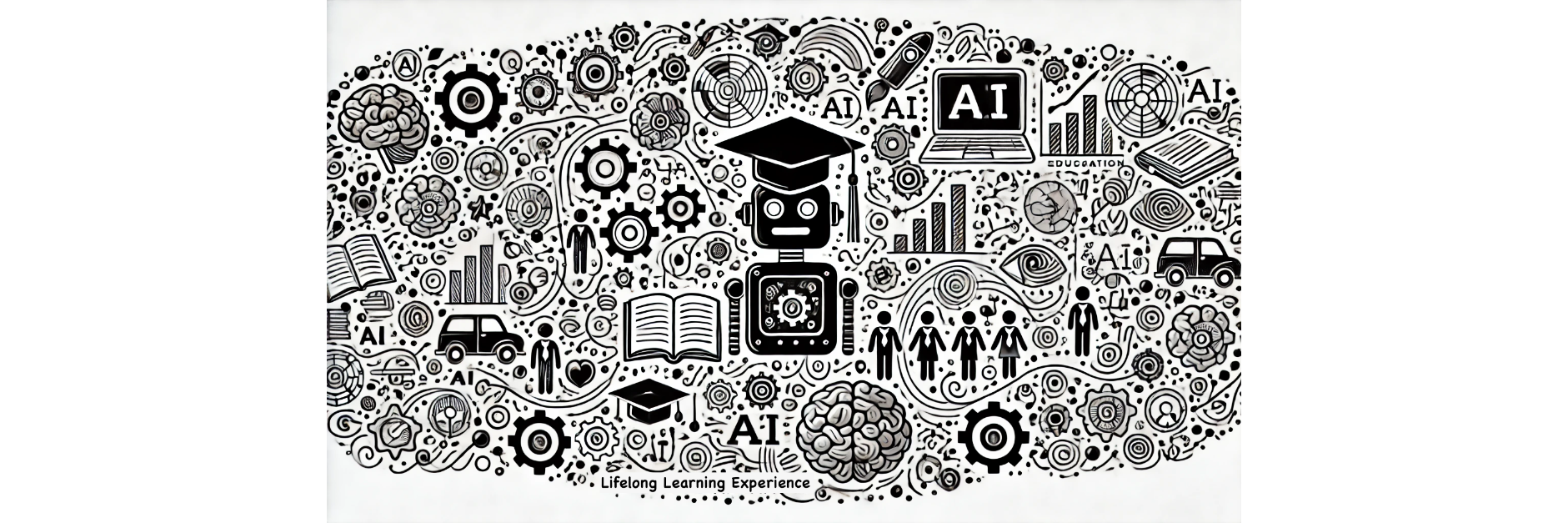What I Learnt from SkillsFuture Festival: Harnessing AI for Lifelong Learning and Career Development
I just returned from the SkillsFuture Festival at SMU and as usual, I walked away with many ideas. This annual event, dedicated to lifelong learning and skills development, offered a myriad of workshops, talks, and networking opportunities that left me thinking about my personal and professional journey. Here are some key takeaways from the event that might benefit you as well.
Every week, I’ll be sharing practical tips and invaluable knowledge to guide you on your path to financial independence.
Embracing AI for Lifelong Learning
One of the central themes of the festival was the role of AI in shaping the future of education and work. In a workshop about how individuals can leverage AI for lifelong learning, the trainer emphasised three critical soft skills that we need to develop–communication, critical thinking, and collaborative skills.
Effective communication was highlighted as an area where AI tools can make a significant impact. Real-time translation and writing enhancement tools can improve both personal and professional interactions. Furthermore, AI-driven platforms that offer personalized feedback can assist individuals in refining their communication skills, making them more effective in their roles.
In the realm of critical thinking, AI can play a crucial role by presenting complex scenarios and problems that require thoughtful analysis. This not only helps in developing problem-solving skills but also enhances decision-making capabilities by teaching individuals how to interpret and leverage data.
Collaborative skills are becoming increasingly important in today’s interconnected world. AI-powered tools such as virtual whiteboards and project management software can facilitate better teamwork, allowing individuals to collaborate more effectively regardless of their physical location. Additionally, AI can support peer learning by connecting individuals with similar learning goals, fostering a collaborative learning environment.
Using the SCORE Framework
The SCORE framework provides a structured approach to using AI for enhancing lifelong learning. Here’s how it works:
1. Structured Fundamental of Questioning: Encourage learners to ask fundamental questions (who, what, when, where, why, how) to deepen their understanding of any topic. AI can assist by providing answers and additional context to these questions, fostering a deeper learning experience.
2. Connecting Ideas and Things: Use AI to connect disparate ideas and concepts, helping learners see the bigger picture. Tools like mind mapping software can visualize these connections and reveal relationships between different pieces of information.
3. Observe and See Relationships: AI can help identify patterns and relationships within data that may not be immediately apparent to learners. This can be particularly useful in fields like data science, research, and business analytics.
4. Reflection: Encourage learners to regularly reflect on what they have learned. AI can assist by prompting reflective questions and tracking progress over time, helping individuals understand their learning journey and identify areas for improvement.
5. Explore with AI: Use AI to explore new ideas and concepts through experiments and simulations.
AI’s Inflection Point and the Future of Jobs
During the panel discussion in the main event, one of the panelists, Vincent Xu highlighted that AI has reached an inflection point where it is now an integral part of our daily lives and is here to stay. This realisation has led businesses to re-prioritize job roles to integrate AI effectively. AI is reshaping job roles, automating routine tasks, and creating new opportunities in data analysis, AI development, and machine learning. Companies are now focusing on areas where human skills are irreplaceable, such as creativity, complex problem-solving, and emotional intelligence.
Another panelist, Dr Fermin Diez shared about how HR teams play a crucial role in this transition. By upskilling employees through comprehensive training programs, companies can ensure their workforce remains competitive. Encouraging employees to pursue relevant certifications and attend workshops helps them stay updated on the latest AI trends and technologies. Furthermore, fostering a culture of continuous learning and mentorship can guide employees in understanding and implementing AI in their roles.
HR teams also need to implement change management strategies to ensure smooth AI integration in the organisation. Clear communication about AI initiatives and their benefits keeps employees informed and engaged. Involving employees in the change process through feedback helps address concerns and build buy-in. Establishing robust support systems, including training resources and technical support, assists employees in adapting to changes brought by AI.
Businesses can also embrace AI solutions by testing new AI ideas through small proof of concepts (POCs). This allows businesses to experiment with minimal risk. Iterative development cycles enable refinement of AI applications based on feedback, ensuring they are well-suited for full-scale implementation. Forming cross-functional teams to work on POCs brings together diverse perspectives, ensuring a comprehensive evaluation and successful deployment.
Future Education for Workforce Readiness
Education must evolve to prepare students for the future workforce. Teaching real-world problem solving is essential. Incorporating practical problems into the curriculum helps students apply theoretical knowledge in practical scenarios. This approach emphasizes critical thinking, creativity, and adaptability, which are essential for solving complex problems.
Instead of chasing after grades, Dr Sungjong Roh suggested that each class should help students develop portfolios that showcases their skills and projects. For instance, a GitHub portfolio for coding classes enables students to demonstrate their programming abilities to potential employers. Portfolios also serve as tools for continuous assessment, allowing students to track their progress and reflect on their learning journey.
Dr Sungjong Roh also mentioned the vital need to embrace cross-disciplinary and interdisciplinary thinking. I would imagine that designing courses that integrate multiple disciplines, such as combining computer science with biology for bioinformatics or engineering with environmental science for sustainable technologies, fosters innovative thinking. Collaborative projects that require input from various fields teach students to work with diverse teams and appreciate different perspectives. A broad-based education that includes humanities, social sciences, and arts, alongside technical and scientific subjects, cultivates well-rounded individuals capable of innovative thinking.
Conclusion
The SkillsFuture Festival at SMU has provided invaluable insights into how we can leverage AI for lifelong learning and career development. By focusing on communication, critical thinking, and collaborative skills, and applying the SCORE framework, we can harness the power of AI to stay relevant and thrive in a rapidly changing world. As we embrace these strategies, we need to adopt a learner’s mindset to prepare ourselves for the exciting opportunities and challenges that lie ahead.

